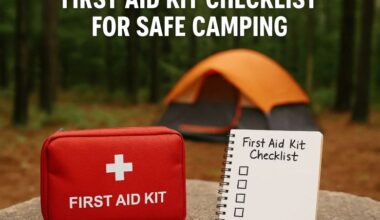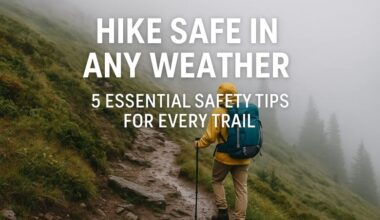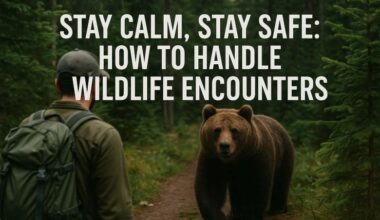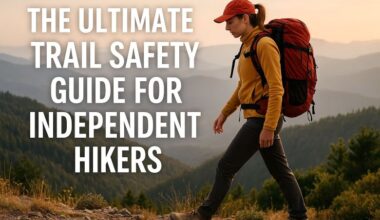The wilderness is wild for a reason. One wrong step, one forgotten item, and your dream adventure could turn into a survival story.
Outdoor adventures like hiking, camping, and backpacking are becoming more popular each year, but with that rise comes an increase in emergencies and safety risks.
Every year, search and rescue teams handle thousands of emergencies caused by poor planning or lack of safety gear. Many accidents happen simply because adventurers didn’t prepare.
The goal is to stay safe and avoid risky situations, which is why having one or more safety essentials in your packed bag is important. This article shares the five most important wilderness safety essentials every outdoor lover should know. These essential tips can save your life and make your trip more fun.
Safety Essential 1: Carry Along Reliable Navigation Tools
Importance of Navigation in Wilderness Safety
Losing your way can turn a fun trip into a dangerous situation fast. Many rescue missions happen because explorers accidentally wander off trail or cannot find their way back.
Without good navigation tools, it’s easy to get lost in unfamiliar places. Knowing where you are at all times can prevent emergencies and save time if rescue is needed. This is a safety essential tip that should not be overlooked, especially when hiking on new trails.
Types of Navigation Tools
- Maps and Compasses
Carry detailed topographic maps and know how to use a compass. Learning how to read terrain features and landmarks makes a big difference. Practice these skills before your trip to become confident in navigation.
- GPS Devices and Smartphone Apps
Electronic tools are handy and accurate but aren’t foolproof. Batteries die, or signals can drop, so always have a backup. Use a handheld GPS or download offline maps on your phone. These can serve as your lifeline in rough terrain.
Tips for Effective Navigation
- Always carry a physical map and compass, even if you have electronic devices.
- Practice route-finding skills in easy locations first.
- Mark waypoints and plan your route ahead.
- Check your position regularly and stay aware of landmarks.
Safety Essential 2: Always Have First Aid and Emergency Medical Supplies
Why First Aid Matters in the Wilderness
Injuries happen everywhere, especially outside the safety of a hospital. Cuts, insect bites, sprains, or allergic reactions can quickly become serious if not treated.
A small cut can become infected, and a sprain might leave you stranded. Having basic first aid supplies can stop problems from getting worse and is a great safety essential to have.
Key First Aid Items Every Adventurer Should Carry
- Bandages, antiseptic wipes, and pain relievers
- Splints and immobilization tools
- Insect repellent and allergy medicines
- Thermometer and hand sanitizer
Basic First Aid Skills to Know
- How to clean wounds and dress them properly
- Signs of hypothermia and heat exhaustion
- How to stop bleeding with a tourniquet or pressure
- Managing minor burns or insect bites
Expert Recommendations
Wilderness first responders stress the importance of knowing how to handle common injuries. Carrying a first aid kit is just part of it; know how to use everything inside properly.
Safety Essential 3: Carry Along Adequate Clothing and Footwear
The Role of Proper Clothing in Wilderness Safety
Clothing is your shield against weather changes and environmental dangers. Wet or cold conditions can quickly lead to hypothermia, while hot sun risks heatstroke. Dressing in the right layers keeps you comfortable and safe. Clothing is a major safety essential that should not be overlooked.
Selecting the Right Gear
- Moisture-wicking base layers help stay dry
- Insulating mid-layers keep you warm in cold weather
- Waterproof outer layers protect against rain and wind
- Durable hiking boots suitable for terrain prevent slips and injuries
Clothing Maintenance and Preparedness
Always pack extra clothes, especially socks and shirts. Keep an eye on your clothing; if it’s wet or dirty, change quickly. Recognize early signs of hypothermia or heat exhaustion and adjust your clothing accordingly.
Safety Essential 4: Carry Along Communication Devices and Emergency Signaling
Importance of Reliable Communication in Wilderness
Being able to call for help or signal rescuers can be your lifeline. Signal failure or remote locations might delay rescue efforts. Having the right tools ensures help can find you fast.
Devices to Consider
- Satellite phones or Personal Locator Beacons (PLBs)
- Whistles, signal mirrors, or flares to attract attention
- Smartphones with offline maps and emergency apps
Best Practices for Signaling for Help
Use loud signals or visual signals in open areas. Keep signaling devices accessible, and always ensure they’re charged or have fresh batteries. Practice using them before your trip.
Safety Essential 5: Knowledge of Local Wildlife and Environmental Hazards
Understanding the Environment to Prevent Encounters
Knowing what animals and plants are around helps avoid dangerous interactions. Be aware of common threats like bears, snakes, or stinging insects. Learn to identify poisonous plants to steer clear of them.
Safety Strategies
- Store food securely to keep animals away
- Carry repellents for insects and animals
- Wear protective clothing when in snake-prone areas
- Watch for unstable ground, flood zones, or falling rocks
Expert Advice
Park rangers and wildlife experts recommend staying alert and respecting wildlife. Making noise and proper food storage keep animals from getting too close.
Conclusion
Staying safe in the wilderness isn’t about fear; it’s about being prepared. Reliable navigation tools, first aid supplies, proper clothing, communication devices, and environmental knowledge form the core of outdoor safety.
Mastering these safety essentials reduces risks and enhances your adventure. Always plan ahead, carry the right gear, and stay informed.
Before your next trip, check local guidelines and refresh your safety skills. The outdoors is amazing; make sure it stays that way by being ready for anything.
Subscribe to this blog for more interesting hacks and tips you can use in your next hiking adventure!




